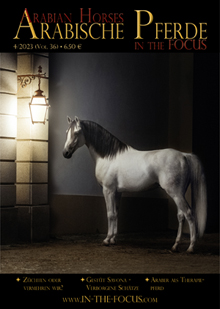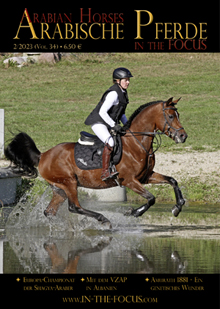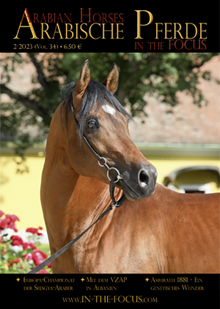Dr Morgane Schambourg, DMV, MSc, Dipl. ACVS / ECVS, has carried out studies on the sensitivity to pain in the legs of endurance horses and developed a method of how this can be measured.
The nociceptors (pain receptors) are responsible for the perception of pain. These are essentially free nerve endings of sensitive neurons in the spinal cord that are found in all pain-sensitive tissues of the body. If these pain receptors are e.g. medicinally “switched off” in the legs, the horse no longer feels pain, even if there is damage. Therefore, changing the sensitivity of the limbs to pain is prohibited in equestrian sports. But at the same time it is difficult to recognize and therefore difficult to punish.
Morgane Schambourg has therefore developed an objective field method to determine the mechanical nociceptive (pain sensitivity) threshold (MNT) in endurance horses. To do this, she used a remote-controlled pneumatic trigger to measure the sensitivity of the front legs to pain in 108 endurance horses. The remote-controlled signal triggers pressure on the front leg with a 1mm thick metal tip. As soon as the horse feels this pressure it will react, e.g. briefly pull the leg away. Then the value is measured, which was necessary to trigger this reaction.
At rest, the average value was 1.9 Newtons (N). The higher the value, the more force has to be exerted to trigger the defense reaction, i.e. the lower the sensitivity to pain. The value for horses in which the sensitivity was not changed was 1.2 N before the endurance ride and 2.4 N after the ride. For horses whose sensitivity was reduced, the value averaged 23.1 N, in some cases 25 N was exceeded, the value at which the test was stopped for safety reasons. If the horse’s legs were treated with Mepivacaine, a local anesthetic that blocks the nerve impulses and thus the pain signals to the brain, the pain sensitivity limit rose to over 25 N after only 10 minutes. Pain sensitivity returned to its initial value after approx. 330 minutes, but was individually different. None of the horses resisted using this technique.
The method is practical, non-traumatic, repeatable and well tolerated by endurance horses under field conditions. The technique differentiated horses with normal sensitivity from horses with reduced sensitivity based on the sensitivity threshold level after the race.
The technology was presented at the
FEI Endurance Conference April 2018 (680 downloads )
and has now been published: Schambourg, M., Taylor, PM. (2019) Mechanical nociceptive thresholds in endurance horses; Veterinary Record, first published: September 28, 2019. doi: 10.1136 / vr.105499
Jan 23 2020













